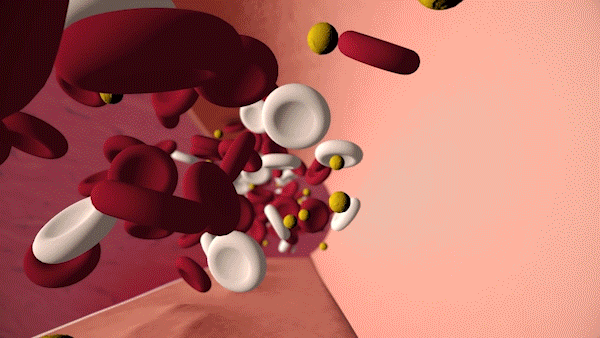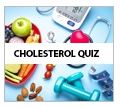Cholesterol Education Month
September 2021
Many of us have had that experience with our healthcare provider where they enter the room with ‘That look’ in the eye that says ‘I know what you did, you know what you did, you were not supposed to do that and now we are going to talk about it…AGAIN’. We may not know what cholesterol is, but clearly healthcare professionals takes it quite seriously. So, what is it and why do doctors care so much?
Cholesterol is a waxy, fat-like substance produced by the liver and is essential for optimal health. It is a necessary element in hormone production and digestion of fatty foods. Our bodies make all the cholesterol we need, explaining why every healthy eating plan suggests eating as little dietary cholesterol as possible. Dietary cholesterol is found primarily in animal-based foods such as red meat, seafood, poultry, eggs and dairy products like cheese and milk. There is strong evidence that eating less dietary cholesterol reduces our risk for a wide array of cardio-vascular diseases.
The two types of cholesterol are generally where confusion enters. There is ‘good’ and ‘bad’ cholesterol and what are they and what does it mean?
LOW DENSITY LIPOPROTEIN (LDL)
Called the bad cholesterol because it collects and builds up in the arterial walls called atherosclerosis. Atherosclerosis is a leading culprit in the development of heart disease, coronary artery disease (CAD), peripheral arterial disease (PAD) and stroke. Most excess cholesterol in the body is comprised of LDL.
HIGH DENSITY LIPOPROTEIN (HDL)
Called the good cholesterol. It’s primary responsibility is to carry the LDL away from the arteries and back to the liver. Once there, the LDL is processed, broken down and cleansed from the body. Both types of cholesterol are a combination of fat (lipids) and protein. The lipids need to attach themselves to the proteins in order to move through the blood stream. The most common types of fat/lipid in our bodies are triglycerides. These are the fats that store the excess energy (calories) from our diet. Of note, only ¼ to 1/3 of our blood cholesterol can be carried by our HDL. It is believed that high levels of HDL in addition to its courier duties may protect us from everything associated with elevated LDL levels.

RISK FACTORS FOR HIGH CHOLSTEROL
- Dietary: eating a diet high in saturated and trans fats
- Behaviors: Exercise and smoking. Get off the couch and move and quit smoking
- Health Conditions: Type 2 Diabetes, obesity, HIV/AIDS, kidney disease
- Genetics/family history and dynamics: There are genetic conditions like familial hypercholesterolemia that can cause elevated cholesterol levels. Shared family behaviors and lifestyles can also encourage or discourage healthy habits or choices.
- Age/Gender: Our risk for high cholesterol increases with age as our ability to clear cholesterol from our blood stream declines with age. Until age 55 or menopause women generally have lower LDL levels than men. Men of any age tend to have lower HDL (good) levels than women.
- Race: Certain races have an elevated tendency towards high LDL.
- Medications: Some medications for other health conditions like High Blood Pressure as well as steroids or medications for HIV/AIDS can increase overall cholesterol levels.
What can we do? Those for us with high cholesterol don’t know we have it until we visit our health professional to have our blood cholesterol levels checked. A simple blood test will check for LDL, HDL and triglycerides since a high triglyceride score increases the likelihood of heart disease. Cholesterol tests are recommended at age 9-11 to establish a baseline, particularly if there is a family history. Follow up testing every 5 years until early middle age is recommended. Men between 45-65 and women 55-65 should be teste every 1-2 years. The Mayo Clinic recommends yearly testing over age 65. They use the following guidelines.
TEST RESULT GUIDELINES

Prevention is the key as with many health conditions. A healthy diet and weight, regular exercise including cardio and weight bearing routines, little to no nicotine and alcohol consumption and medication awareness can all contribute. Many people do not know that statins can prevent you from producing naturally occurring cholesterol and other meds can reduce the amount of dietary cholesterol your body can absorb.
High cholesterol affects 38% of American adults, defined as those with a total blood cholesterol of 200 mg/dL. That’s 93 million of us. Nearly 29 million have total cholesterol levels exceeding 240 mg/dL. Disturbingly 7% of US children ages 6-19 are diagnosed with high cholesterol.
Many well-known personalities have high cholesterol and have spoken quite passionately about it including Toni Braxton and Oprah Winfrey. In addition to other issues, FDR, Curley (3 Stooges), Barry White and Whitney Houston all had high cholesterol. Interestingly the states with the highest levels of high cholesterol are include West Virginia, Kentucky, Tennessee, North Carolina, Alabama, Mississippi, Louisiana, Arkansas, Oklahoma and the panhandle region of Alaska. I am frankly astonished that my area of Wisconsin is excluded from this list.
Because of the silent nature of high cholesterol many of us don’t know we have it, how to prevent it or how to combat it. It can often be a significant contributor in other life threatening health issues. Forewarned is forearmed. A careful, proactive and interactive relationship with your health care professional team is part of an overall healthy lifestyle plan of care.
CLICK HERE to test your cholesterol smarts and learn more about cholesterol management.
NHS Solutions provides a wide range of interim healthcare professionals across the care spectrum. Contact us to discuss your next career opportunity or recommend a friend or colleague for one of our current, urgent needs.

